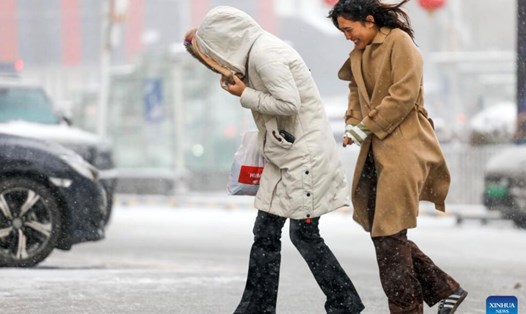January 2025 is the hottest January on record despite global temperatures being affected by La Nina. Record temperatures in January extended the unusual heat wave, with 18 of the 19 consecutive months of average global temperatures rising more than 1.5 degrees Celsius above pre-industrial levels.
The increasingly severe temperature can eventually make many areas of land where people are living so harsh that they are no longer suitable for human life.
Aidan Charron, an environmental scientist and deputy director for Earth Day, warned that warning signs of extreme heat have appeared. Some in South Asia, sub- Sahara and Middle East Africa such as Dubai in the United Arab Emirates will face some of the worst impacts of climate change as a worsening extreme temperature index, he told Yahoo News.
In May 2024, India and Pakistan experienced a record heat wave with temperatures reaching 50 degrees Celsius. Mr. Charron warned that in the future, the weather could be even harsher. "New Delhi was particularly hit by the high temperatures. We can easily see the temperature index in this part of the world, making outdoor life almost impossible by the end of the century. In the US, this will also be a problem for example, Chicago is becoming a seriously hot zone, he added.
Some of the world's most populous regions in Africa and Southeast Asia are at highest risk. Previous studies show that Yemen's cities such as Hudaydah could experience up to 56 days of unbearable heat in a year, while Aden has 34 days. Jeddah in Saudi Arabia will have 37 days, Lahore in Pakistan will have 24 days, while Dubai will have 20 days and Delhi will have 6 days.
In Iraq and Syria, droughts have been linked to rising social tensions and mass migrations. By 2050, some areas in the Middle East could have up to 30% less rain, turning areas with fat into deserts," he said.
People can survive at very high temperatures (over 50 degrees Celsius) when the humidity is low. However, in high humidity conditions, we cannot stand the temperature of only 35 degrees Celsius for a long time because the body cannot cool down by sweating. In such conditions, even the healthiest people can die in just a few hours.
In the coming decades, thewet-bulb temperature index, just the lowest temperature that an object can drop when the hoi evaporates from it, could become an important factor in determining which areas on Earth are warming but can still survive.
The highest humid soil temperature that humans can survive is 35 degrees Celsius for about 6 hours. Areas that are predicted to easily reach this temperature, and therefore cannot survive, are South Asia, the Gulf of Tonkin and the Red Sea around 2050, as well as eastern China, some parts of Southeast Asia and Brazil by 2070" - climatologist Jennifer Brandon - founder of Wild Beacon Consulting, shared with Yahoo News.









